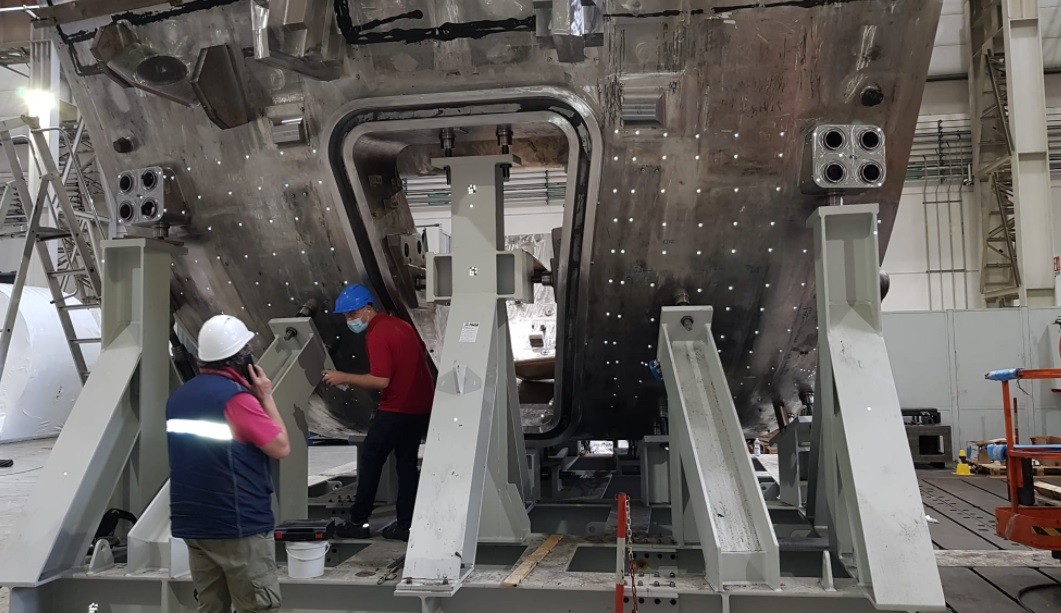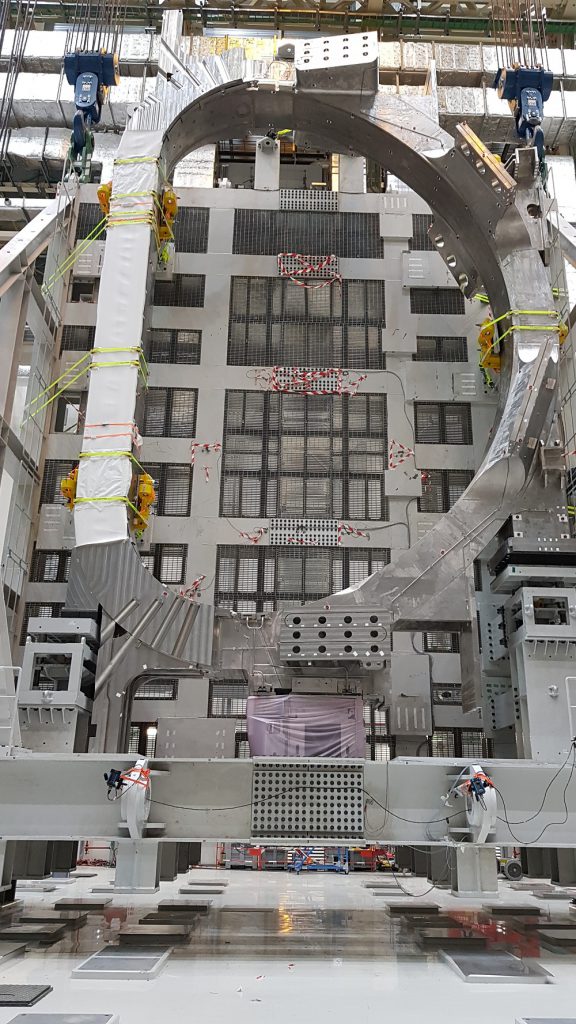The shape is right!

The bright points in the picture are photogrammetry targets (the points to be measured) placed on the vacuum vessel PS4 outer shell before final machining. Mangiarotti, Italy, May 2021.
Metrology plays a key role making sure that ITER components correspond to their technical specifications. Regardless of the size, load, or the location of the facility, teams of F4E experts meticulously check all pieces of equipment during the entire manufacturing process.
Photogrammetry is one of the techniques used to inspect and validate the shape of components. It consists of using a special camera to take photographs of the object from at least two different locations, so that one can get a 3D representation (just like we need two eyes to properly perceive depth and see in 3D).
F4E experts have used this method in the follow-up of the manufacturing of toroidal field coils and vacuum vessel components. Comparing the shape of the object at any given stage helps engineers to make sure that their dimensions are always within the required margin of tolerance. Recently, it has also been used to control the deformation of vacuum vessel segments during both positioning and welding processes.

The most impressive application of this technology is real time photogrammetry, for which you need at least two cameras. Data can be analysed live during the inspection process. This method was used in June to control the two hours of lifting of the toroidal field coil 12 in the ITER Assembly Hall. The operation consisted of moving the coil from a horizontal to a vertical position. Experts were checking the deformation of the component during the process to raise an alert if the limits were exceeded. The superconducting material of the coil is very sensitive to deformation, therefore it is crucial to control the shape of the magnet to prevent it from getting damaged.
“Photogrammetry is very convenient because it does not depend on the number of points you have to control, giving you greater flexibility and precision. For example, other technologies such as laser tracker can check one point at a time, which either limits the number of measured points or makes the inspection process more time-consuming. Photogrammetry is now mastered at F4E and can be used for other projects in the future,” concludes Alessandro Lo Bue, F4E Metrology Technical Officer.